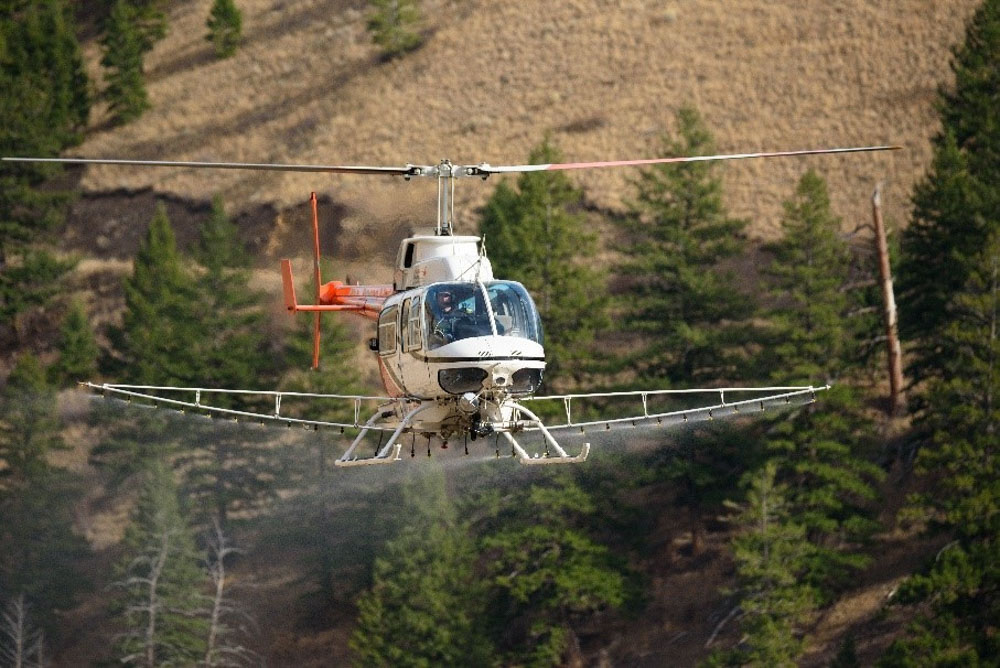Below is a news release from Idaho Game and Fish. The Rocky Mountain Elk Foundation provided funding for this project.
People planning to recreate near North Fork in October may see low-flying helicopters spraying hillsides to control the spread of invasive grasses and noxious weeds. The goal is to improve big game winter range and reduce wildfire risk.
Work is scheduled to begin October 4 and take approximately seven to ten days to complete, depending on weather conditions. Areas to be treated include portions of lower Sheep Creek, lower Silverleads Creek, Buster Gulch, Wagonhammer Creek, Burns Basin, and Fourth of July Creek. Approximately 7,500 acres will be treated.
Helicopter and work crews will be staging at various locations including Sheep Creek, Trail Gulch, Donnelly Gulch, near the mouth of Wagonhammer Creek, and along Fourth of July Creek. For safety, fall recreationists are urged to avoid these areas while helicopters and crews are working.
Maps of the treatment areas and staging areas are available at the Forest Service and Fish and Game offices in Salmon, as well as posted at various community locations.
The primary purpose is to reduce the fine fuels created by the invasion of non-native annual grasses, especially cheatgrass. Fall is the best time to spray since most cheatgrass seeds sprout in the fall and are susceptible to low rates of herbicide that won’t harm native grasses and forbs.
These areas provide key big game winter and spring range for bighorn sheep, elk, mule deer and pronghorn. Native bunchgrasses necessary to the winter survival of big game animals do not thrive when forced to compete with cheatgrass or other non-native invasive annual grasses. When winter habitat burns, invasive annual grasses become even more predominate. Cheatgrass, which is not native to North America, thrives under disturbance such as fire. Since cheatgrass is highly flammable, this skews the natural fire cycle and increases the likelihood of more fire.
Aerial seeding of native grasses is also planned for late fall, which is the ideal time since fall moisture and cooler temperatures encourage grass seed to sprout. This gives young plants a chance to establish a strong root system before hot, dry summer conditions arrive the following June. The seeding project is a partnership between Rocky Mountain Elk Foundation, Salmon-Challis National Forest, and Idaho Fish and Game.
(Photo source: Idaho Fish and Game)
